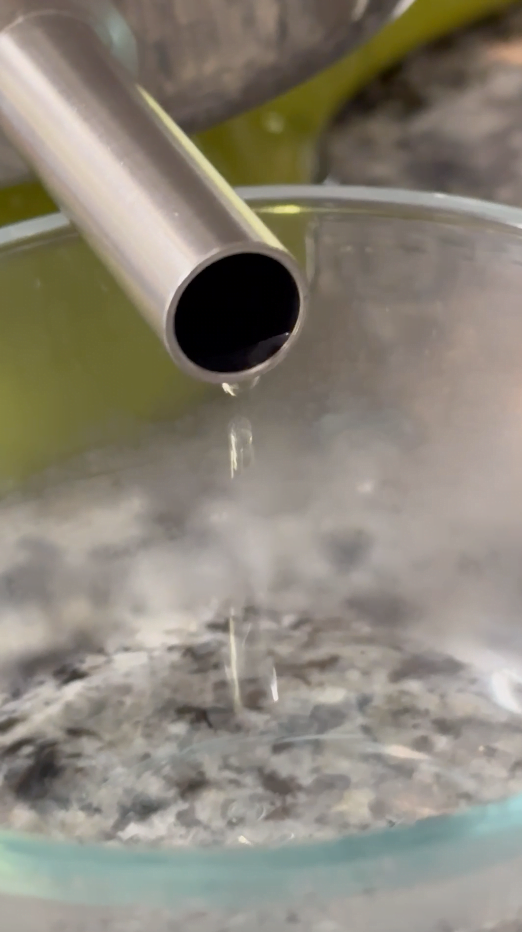Extracting Essence From Plants For Cooking Health And Beauty is a natural approach to utilizing all the goodness plants have to offer our lives.

Let’s Get Into The Kitchen And Try Our Hand At Botanical Extracts And Discover The Best way To Use Them!
Plant Extracts For Food Health And Beauty
Evidently plants are where many of the important aspects of our health, sustenance, beauty and aromatherapy come from.
The food industry depends on it for so much more than flavor, and the beauty industry wouldn’t be what it is without the extracted bioactive compounds in plants.
Goodness knows, the pharmaceutical industries wouldn’t exist without the medicinal plants they research and copy.
So why do we succumb to depending on these huge industries for the stuff growing in our backyard?
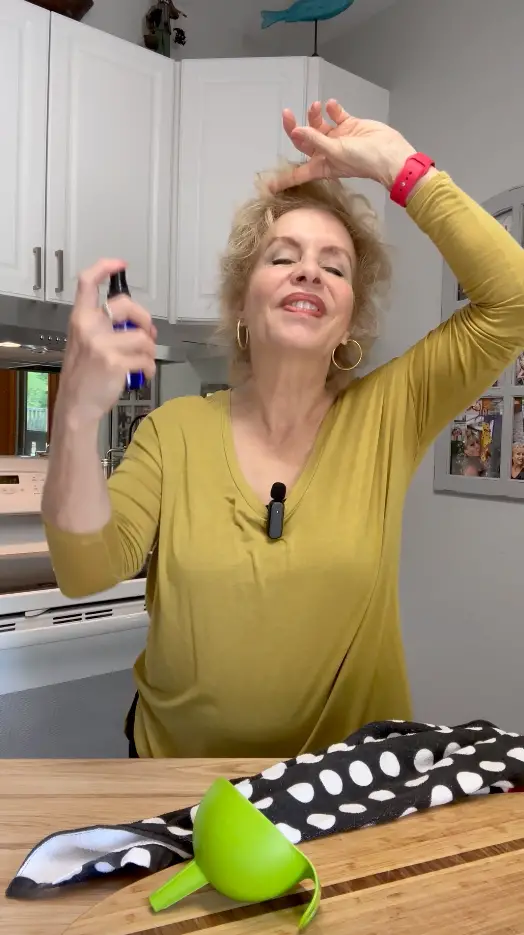
Where Do Plant Extracts Come From?
Here is where it gets interesting, if not exciting.
The essence and valuable properties we desire, are most present in the natural state of the plants.
Cuttings from fresh flowers to dried plant material, which can mean roots, stems, leaves and all, are where these extractions are obtained.
While dried herbs can be used successfully in the steam extraction process, I wanted all the active ingredients I could get from freshly harvested plants.
Fascination In Health Practices Of Ancient Times Being Used In Our Modern Times
Since ancient times, particularly ancient Egyptians, the desire to extract the scents and flavors of leaves, flowers and trees, inspired our approach to do the same in present times.
Would you believe that the practices to be able to do this, are not so far different than they used to be?
The intended use of these extractions is what we want to be able to use in our cooking as well as in the many products we need for health, and want for physical enhancement.
But how can we, as everyday cooks and homemakers, accomplish this at home?
The Most Common Methods For Utilizing Botanical Material
If you have ever grown a garden at home, or simply tried to save a floral bouquet for memorabilia, you have more than likely used this method.
This is called ‘drying’.
Hanging plant cuttings, or a bouquet of flowers, upside down for several days, will allow the plant to dry, intensify its flavor, and often retain a faded hint of its color.
By hanging plants upside down, it forces a slower and more even drying of the plant.
Drying Herbs Intensifies Their Flavor For Cooking
When we grow herbs in our garden, a great way of using the herbs in winter months, is to dry them upside down, crush them and save them in glass jars for cooking.
After-all, that is pretty much what you are buying at the grocery store when you buy many herbs for cooking.
For us ‘everyday’ homemakers, this is the most common method for extracting flavor from botanical material.
However, it doesn’t extract many of the nutrients or pure essential oil, as is done with raw material.
Let’s Talk About The Extraction Methods Of Steam Distillation
Before I ever thought to buy myself a steam distilling contraption for my personal educational purposes, I used to try simply boiling, as a means of extraction.
Although boiling a pot of oregano, mint or orange peels gave the water plenty of flavor, some oils and I’m sure offered itself for some medicinal purposes, ultimately I felt I had more water than essence.
For this reason, I wanted to try a ‘beginners’ at home steam distilling tool.
A Rookie Process And The Final Product
First, and foremost, I want to stress that I am not a biologist, botanist or profess to be anything other than a passionate user of floral water, aromatic oils, and love to cook with aromatic plants.
Basically, the included video I made for you, will demonstrate my first attempt to extract allantoin from raw plant material, ie my comfrey plants.
The process was easy, and the extraction took less than 30-minutes.
While from about 3 cups of water, I only got about half-a-cup of distilled liquid from plant oil properties, I was elated with my first attempts.
Basic Instructions For How To Use The Steam Distiller
Speaking to you as a chef, not a scientist, here is how I went about my first attempt.
– Step 1 Several cups of filtered water in the boiling pot of the distiller.
– Step 2 Chopped plant parts to go into the steamer, with a sieve plate on the bottom and top.
– Step 3 Steamer gets screwed onto the pot.
– Step 4 A silicon tubing connects the steamer to the condenser.
– Step 5 High temperatures from boiled water and Ice cubes go into the condenser, which I forgot to do at first, but once the ice went in around the condenser, the extraction moved along more swiftly.
– Step 6 Within 30 minutes I was able to collect my first distillation.
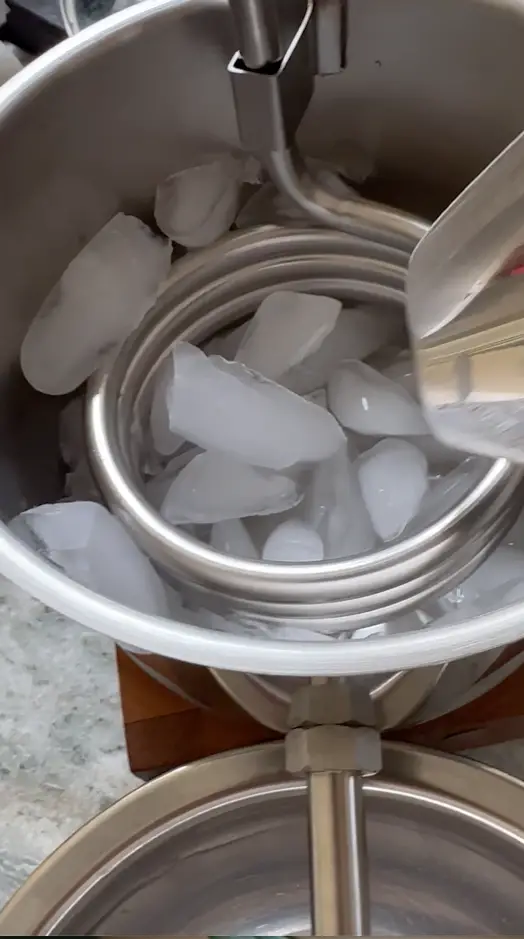
How Steam Distillation Works And Its Method Of Extraction
Interestingly enough, the steam behaves like a solvent.
It passes through botanical material and in that process, various organic molecules are picked up and carried by the steam into the cold condenser.
Placing ice into the condenser, which I failed to do first try, but did the second, does speed up the condensation process.
Plants contain a basket full of molecules.
The steam takes out all of them, some you want and some, not so important.
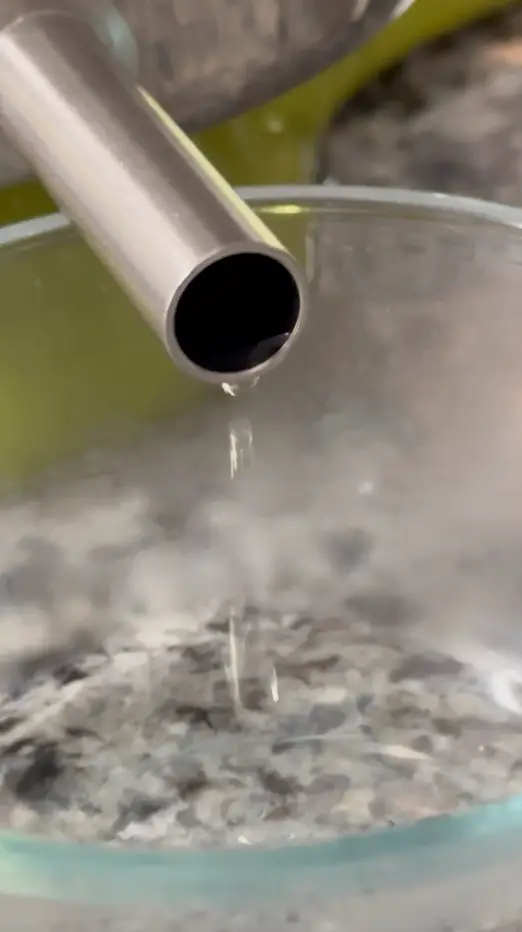
The Distillation Of Allantoin From Comfrey Plants And Why
Allantoin is one of the most common molecules around us, present also in rainwater.
I planted comfrey in my garden specifically for its allantoin properties, which are known for their potential in renewing cells in the skin.
This process in turn causes the skin to shed the dead skin, leaving it smooth and healthier looking.
It is known also for reducing inflammation of the skin.
For this reason, when my kids were in diapers I always used a comfrey diaper rash cream, and it worked!
Another Form Of Distillation Used To Make Tinctures
While steam distillation is fast becoming my favorite method, or maybe because it’s new for me, I have often used alcohol, as a solvent extraction for my aromatic compounds.
Soaking aromatic plants, such as sage leaves, rosemary even some types of evergreen needles in vodka for several days, works as an essential oil extraction for flavoring lots of recipes.
I used this method with juniper berries to make the best Creme Brûlée ever!
Want To Know Where Your Traditional Medicine Comes From?
Years ago, before I moved to Brazil, I remember a chat I had with a Catholic priest.
The interior of Brazil, far away from the chic cities, is where his first assignment was right out of seminary school.
Having expressed my interest in plant medicine, he told me the story about the enormous number of American pharmaceutical companies that had erected research laboratories all throughout the region where he was living.
Why, I asked?
“Because they study the rich resource of plant life here in the tropical areas and rain forest areas. When a plant is found to have valuable medicinal properties, they are then able to get a patent on it, the approval of the Drug Administration, and it then belongs to the money making pharmaceutical companies”.
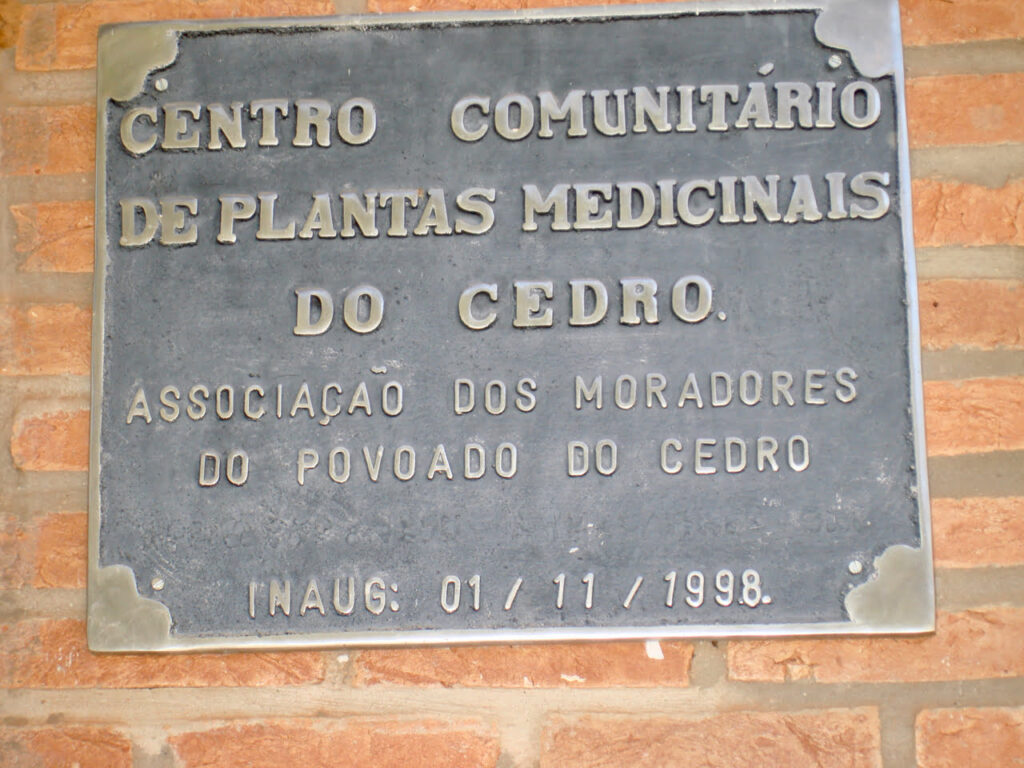
Extracting Plant Essence In Brazil For Medicine Food And Beauty Products
Wouldn’t you know it, many years later, after that chat with the priest, I moved to Brazil.
I too started out in the interior in the state of Goias, also rich in plant medicine and plant knowledge.
Exploring so many different methods of extraction for a finished extract, is what I spent my first year in Brazil doing.
Now, here I am many years later, excited to be trying my hand at growing a variety of plants I can use for cooking, medicines and beauty aids.
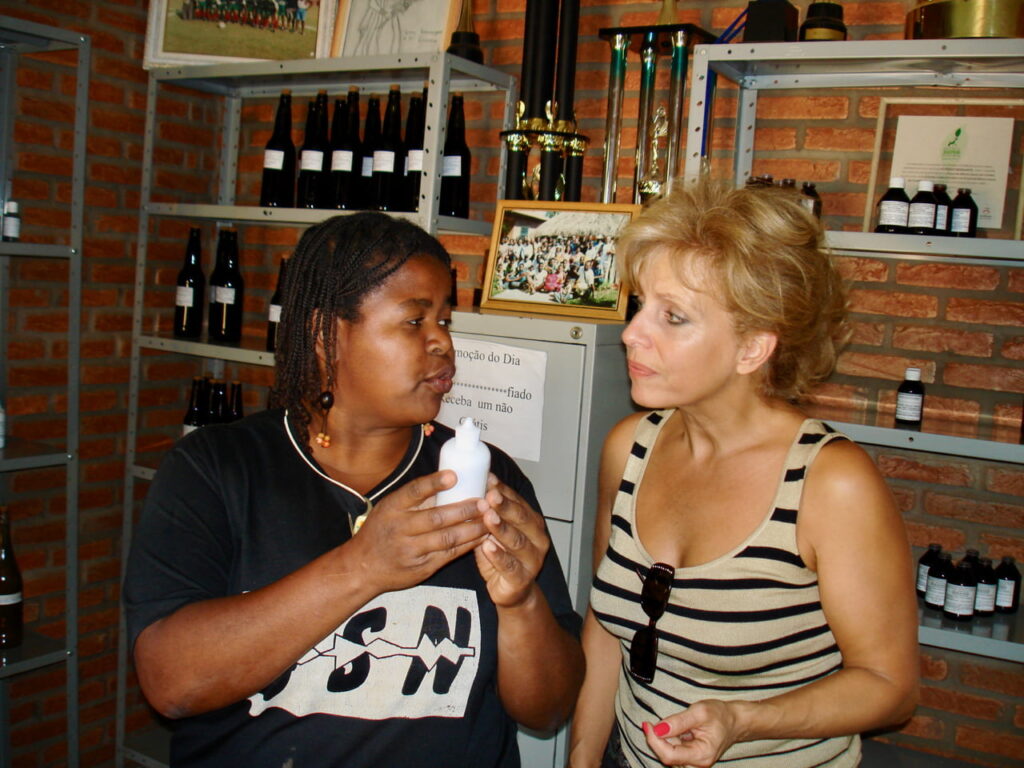
Let’s Get Into The Kitchen And Try Our Hand At Botanical Extracts And Discover The Best Way To Use Them!
As I stated before, until now, I have made a variety of ‘health helpers’ with plants I have grown.
Here are just a few you can easily make without a steam extracting device:
- Oregano For Tummy Troubles – Tummy Troubles Oregano Potatoes are an ancient approach to ‘tummy troubles,’ from hangovers to flu, using the medicinal properties of oregano.
- Red Clover For Hormone Help – Red Clover Hormone Health, to help balance female hormones for sleeping and feeling better, is my ‘grow your own’ health tip for you.
- Citrus Fruits For Immune Support – Immune Support Citrus Health Hacks are for all seasons and for all immune support reasons using both the juice and oil rich skins of all citrus.
- Homemade Elderberry Gummies – Homemade Elderberry and Honey Gummies, made with elderberry flowers and berries simmered into a honey tea, made into healthy gummies.
- Citrus Oregano Cough Syrup – Citrus Oregano Cough Syrup, a homemade remedy, made of citrus peels, fresh oregano, honey and a splash of vodka for an ancient wellness remedy.
- Comfort A Cold Wellness Popsicles – Comfort A Cold Wellness Popsicles Naturally are all about the citrus, ginger, chili peppers, honey, herbs a little booze to comfort throat and cough.
Equipment Needed
- Steam Distillation Kit – I found this stainless steel steam distillation kit the easiest and most affordable
- 1 Ounce Glass Spray Bottle – for storing the collection
- Small Funnel
- Cutting Board and Knife
- Gloves
- Stovetop or burner
Ingredients Needed
- Fresh Comfrey Leaves – preferably, or dried
- Filtered Water
- Ice Cubes
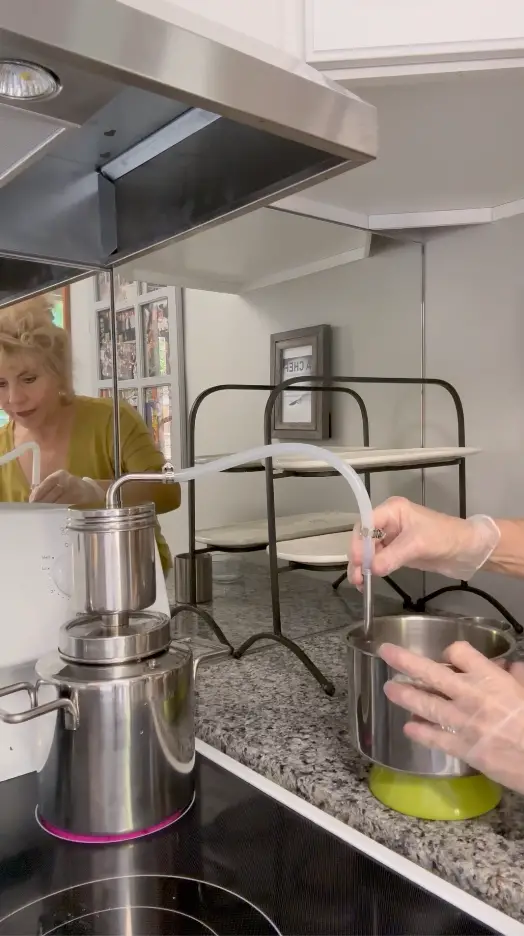
Distillation Of Allantoin From The Comfrey Plant
Equipment
- Steam Distillation Kit
- 1 oz spray bottle
- Cutting board and knife
Ingredients
- 2 liters Filtered water
- 2-3 cups Comfrey leaves or other plants
- 2 cups Ice cubes small or crushed
Instructions
- Place several cups of filtered water (depending on the size of your pot) in the boiling pot of the distiller.
- Wash, dry and finely chop, if not macerate, the leaves and stems of the comfrey leaves or other plants and flowers you are using. Place them into the steamer pot, with a sieve plate on the bottom and top. Steamer top gets screwed on tight.
- Attach the silicon tubing to the steamer and the condenser. The condenser pot may need a small stand under so it allows room to place a cup under the drip spout.
- Turn on the heat. Add ice cubes into the condenser. Place a drip cup under the spout.
- By the time the water starts to boil, lots of steam should begin to appear, take care not to burn yourself with the steam, and you will begin to see a collection of beautiful essence go into the cup. Once it is apparent the boiling water has reduced (don’t let it dry out), turn off the stove.
- Transfer the collection into a spray bottle, or use the collection to add to your creams and lotions.
Video
Notes
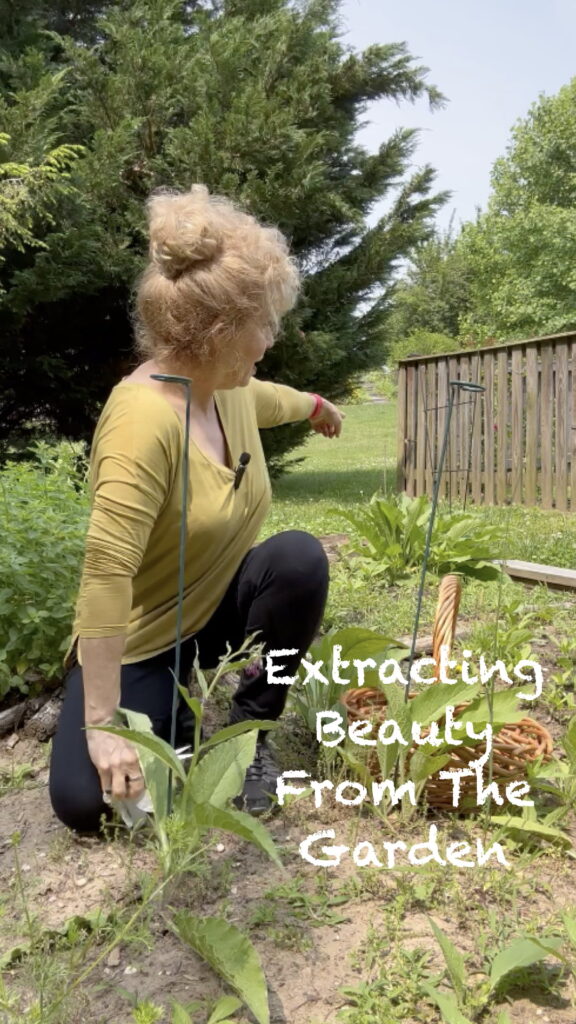
Extracting Essence From Plants For Cooking Health And Beauty

